The Universe is beautiful.
Which is interesting. It doesn?t have to be; it could be all colorless and weird and lumpy. Instead, it?s bursting with color, sculpted by vast forces, molded into fantastic shapes that please our eyes and delight our brains?especially once we understand what we?re seeing.
Every December I pick my favorite images from the previous year to display, a task that is extraordinarily difficult. I always wind up with a list of about 60 or 70, and I have to cull it down mercilessly. Such is the case this year again, and I could pare it only to 21, a score and more of gorgeousness for you to soak in. I choose the pictures not just for their beauty but also because they are interesting, and different?ones that stand out from the crowd somehow. I usually put them in order with my favorite one last, but this year I just can?t. I?ll let you know my favorite when you get to it?I expect you?ll agree?but other than that it?s just a dead tie.
Many of these, you might expect, are from Hubble, but other telescopes get their share, as well as some that were taken by amateur astronomers with not much more than good cameras and a desire to see and capture the Universe.
I can?t argue with that sentiment. So here they are; enjoy.
On Aug. 31, 2012, the Sun had a major hissy fit: A vast arch of material was lifted up off the surface by the Sun?s powerful magnetic field. Sometimes these arches collapse back down, but this one erupted, blasting literally hundreds of millions of tons of superheated plasma into space at a speed of 1,400 kilometers per second (900 miles per second)?over a thousand times faster than a rifle bullet. The scale of this is crushing?the arch was 300,000 kilometers (200,000) miles) across, 25 times larger than the Earth. As we near the peak of the Sun?s magnetic cycle, we?ll be seeing even more activity like this in the coming months.
Venus orbits closer to the Sun than the Earth does, and on rare occasions our orbits align such that Venus passes directly in front of the Sun. The last time this happened was in 2004, and it happened again on June 5, 2012. Probably millions of photos of the event were taken, but one of my favorites is this view from the NASA/JAXA (Japanese Space Agency) Hinode spacecraft, just as Venus was fully entering the Sun?s disk. The Sun looks like a boiling cauldron with Venus silhouetted against it. The ring around the planet is from Venus?s thick atmosphere, scattering and bending the sunlight coming through from the other side.
If you missed the transit, you?re probably out of luck: The next one isn?t until December of 2117! So you?ll have to be satisfied with pictures; I have a gallery of them, as well as a few others I liked here and here.
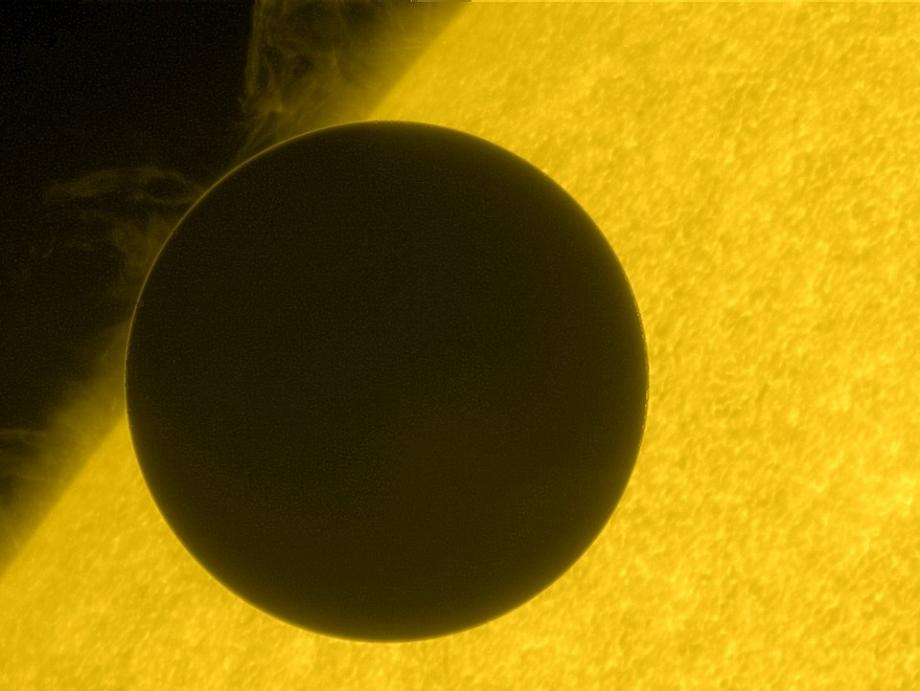
JAXA/NASA/Lockheed Martin.
The Best Vacation Photo Ever
One of the single biggest events of the year was the successful?if hair-raising?touchdown of the Mars Science Laboratory, aka Curiosity, on the surface of the red planet. The most advanced piece of hardware ever to set foot wheel on another world, Curiosity is equipped with an array of cameras, geological tools, and even a high-powered laser to zap rocks and determine their composition. On Halloween, it used its Mars Hand Lens Imager to take 55 high-resolution pictures of itself, which were assembled to create this amazing self-portrait. The reason you can?t see the arm holding the camera is that it was essentially edited out of the final shot by careful selection of which pictures were used in the mosaic.
This picture stands as proof of what we humans can do: fling a spacecraft to another planet and safely land a one-ton, laser-eyed, nuclear-powered mobile chemistry lab.
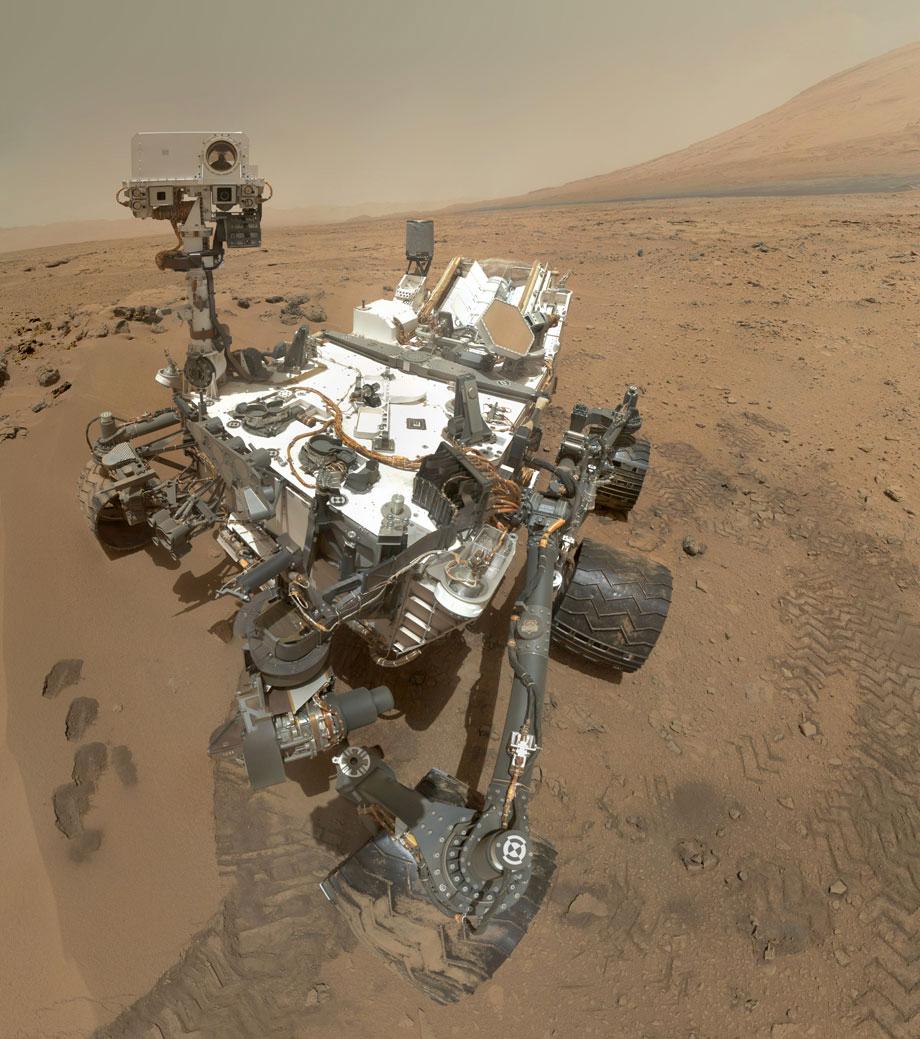
NASA/JPL-Caltech/Malin Space Science Systems.
Mars is an amazing place. I sometimes still think of it as cold, barren, and dead, but this is simply prejudice on my part. Well, it is cold, but dead it is not: It has an atmosphere capable of astonishing feats, including creating enormous dust devils?mini-tornadoes? like the one seen here by the HiRISE camera on the Mars Reconnaissance Orbiter. This towering vortex was 800 meters (half a mile) long as it swept across the ochre landscape. The plume was bent by the wind, creating that gently sweeping tail, and you can see its shadow on the ground. Dust devils form when air warmed by the ground below rises. If there?s a steady wind it can wrap the rising air into a vortex that can tip vertically and swirl around. They?re common on Mars, but one this big is unusual ? though not long afterward, another one formed that was a staggering 20 kilometers (12 miles) high!
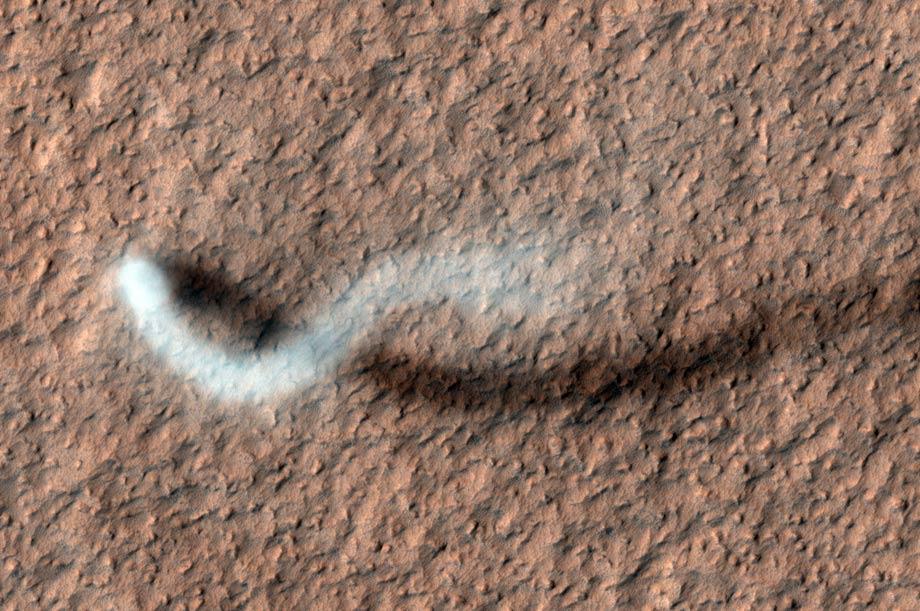
NASA/JPL/ University of Arizona.
Saturn?s Eye into the Abyss
Saturn is most famous for its magnificent rings and bizarre fleet of moons. But the planet itself has some major weirdness going on as well. Saturn is a gas giant, with a tremendously thick atmosphere that is tens of thousands of kilometers deep. At its north pole there is a hexagonal vortex, a swirling system of clouds and storms 25,000 kilometers (15,000 miles) across?twice the size of the Earth! In the very center of the hexagon is a circular weather system, the Eye of Saturn, seen here by the Cassini spacecraft. You can clearly see storms clouds rising above the cloud deck, and the detail is phenomenal. This feature is about 2,000 km (1,200 miles) across?two-thirds the length of the United States.
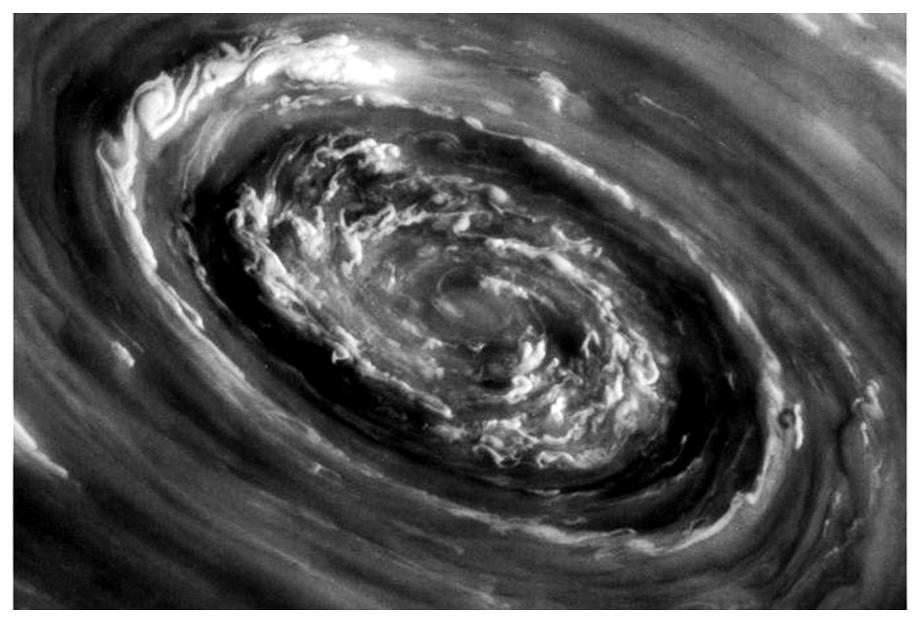
NASA/JPL/Space Science Institute.
IC1396 is a huge cloud of gas and dust, a star-forming factory 100 light years across. Massive, hot, young stars in the center have blown an enormous cavity in the center of the nebula, their fierce stellar winds and blasting ultraviolet light eating the cloud away from the inside out. J-P Mets?vainio is a Finnish astrophotographer who took several images of this sprawling cloud, broke them up into layers, made a computer surface model of the structure, then remapped it all into different frames seen from different angles. The finished product is this jaw-dropping three-dimensional animation. I?ll note this is an approximation to the real structure of the nebula, an educated guess. But it gives an incredible feel to the object and a real sense of what it must really be like. (Image credit: J-P Mets?vainio).
When a 30-Octillion-Ton Baby Throws an Epic Fit
When humans are babies, they tend throw lots of tantrums and, um, spew material out of both ends. Stars do that too: Meet Sharpless 2-106, a baby star just getting its start but still capable of throwing epic fits. At 30 octillion tons, it packs a bit more oomph than your standard human baby! You can see it in this Hubble Space Telescope picture just below center. Like many young stars, it has a disk of material swirling around it (too small to see here), and this can focus twin beams of matter and energy which blast away from it like the beams of a lighthouse. This expanding material slams into the surrounding cloud of gas and dust, pushing it aside and creating the hollowed-out region you can see in blue. The actual process is fairly complex and not perfectly understood, but what?s not hard to understand is the terrible and stunning beauty of this scene.
In fact, this picture is so gorgeous it inspired my friend, space artist Lucy West, to paint it, and the results are remarkable, to say the least.
[And yes, this one is my favorite of them all. Seriously, wow.]
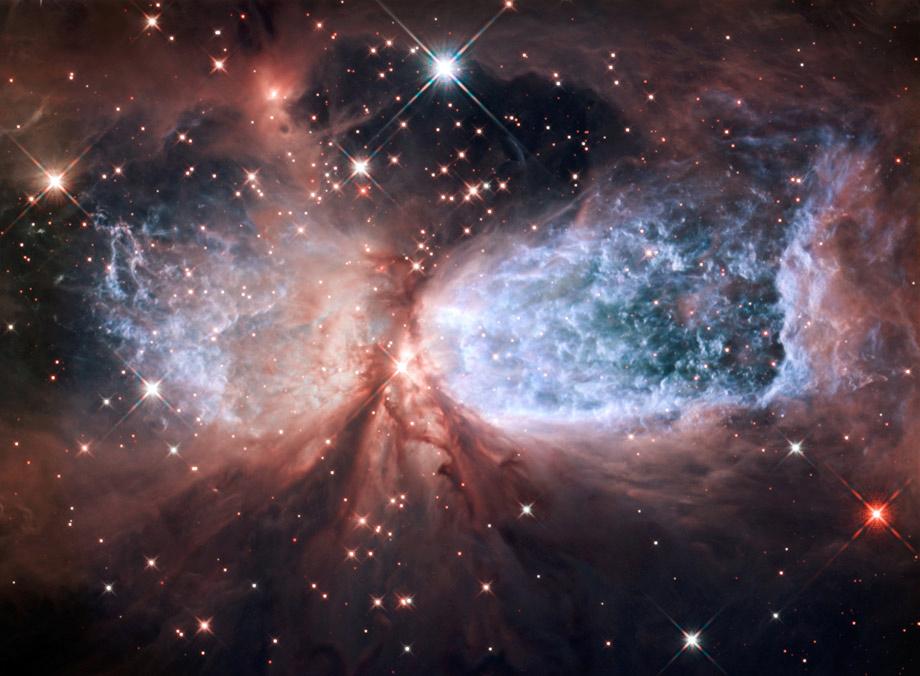
Hubble: NASA, ESA, and the Hubble Heritage Team (STScI/AURA).
Source: http://feeds.slate.com/click.phdo?i=c2f944d4805c730287f1c3f1590beb80
jack white kowloon walled city ronda rousey vs miesha tate lindsay lohan snl lindsay lohan on snl real housewives of disney awakenings
No comments:
Post a Comment
Note: Only a member of this blog may post a comment.